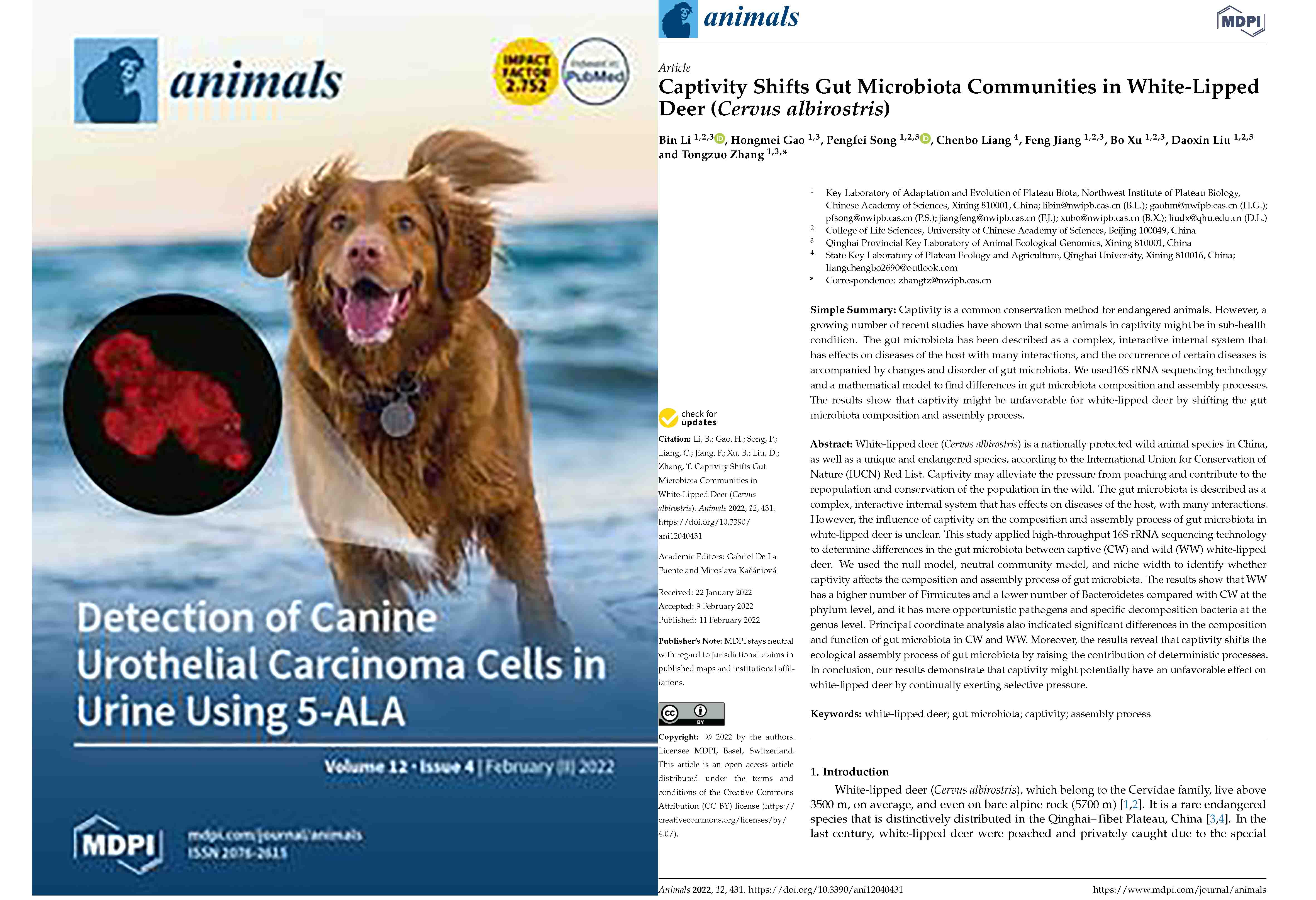Captivity Shifts Gut Microbiota Communities in White-Lipped Deer (Cervus albirostris)
Author:Bin Li,Hongmei Gao,Pengfei Song,Chenbo Liang,Feng Jiang,Bo Xu ,Daoxin Liu and Tongzuo Zhang
Abstract:White-lipped deer (Cervus albirostris) is a nationally protected wild animal species in China, as well as a unique and endangered species, according to the International Union for Conservation of Nature (IUCN) Red List. Captivity may alleviate the pressure from poaching and contribute to the repopulation and conservation of the population in the wild. The gut microbiota is described as a complex, interactive internal system that has effects on diseases of the host, with many interactions. However, the influence of captivity on the composition and assembly process of gut microbiota in white-lipped deer is unclear. This study applied high-throughput 16S rRNA sequencing technology to determine differences in the gut microbiota between captive (CW) and wild (WW) white-lipped deer. We used the null model, neutral community model, and niche width to identify whether captivity affects the composition and assembly process of gut microbiota. The results show that WW has a higher number of Firmicutes and a lower number of Bacteroidetes compared with CW at the phylum level, and it has more opportunistic pathogens and specific decomposition bacteria at the genus level. Principal coordinate analysis also indicated significant differences in the composition and function of gut microbiota in CW and WW. Moreover, the results reveal that captivity shifts the ecological assembly process of gut microbiota by raising the contribution of deterministic processes. In conclusion, our results demonstrate that captivity might potentially have an unfavorable effect on white-lipped deer by continually exerting selective pressure.




 青公网安备 63010402000197号
青公网安备 63010402000197号